
Browse through our titles HERE or listen to the stories on our YouTube Channel.
Available at all major retailers including:



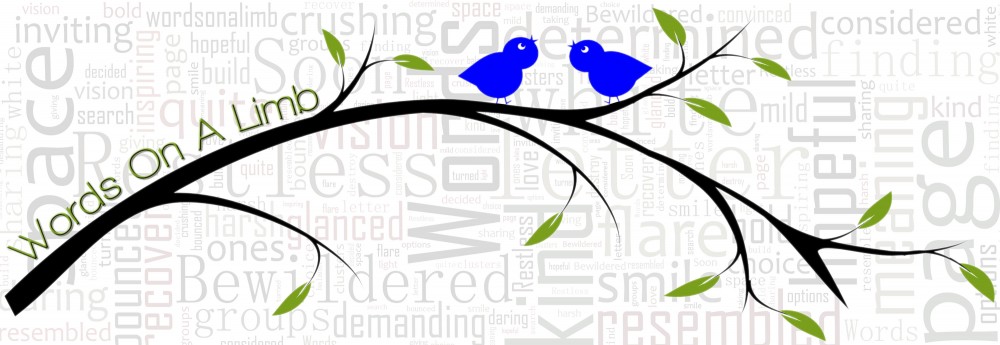

Browse through our titles HERE or listen to the stories on our YouTube Channel.



As we witness an alarming rise in antisemitism worldwide, we’re reminded of the important role parents and educators play in pushing back against violence, intolerance and hate.
Now, more than ever, it is imperative for us to lead by example and instil compassion in our students’ hearts, an essential ingredient for a healthy, morally driven society. As our children’s most powerful influencers, we are their conduit to the world. The way we interact and talk about others, what we say, or don’t say, becomes vital in their understanding of the world. By reinforcing kindness, tolerance, and compassion, we embolden our children with the skills to live peacefully and comfortably in a diverse world.
Equally imperative is that while we teach our students to be accepting of different views, ideas and thoughts, a hard line must be drawn to disallow tolerance for destructive ideologies based on hate. Violence and its glorification should never be the end result of differing viewpoints. Nothing but destruction awaits there. Teachers can counteract learned biases and attitudes of intolerance that children may learn elsewhere. Stereotypes and lies must be challenged and rooted out through education.
When we explicitly teach our students to respect those who are different from us, the cycle of hate is challenged and disrupted. This is especially important in today’s world where we see hostility based on national and religious differences. We must prepare our students to live in a diverse world, with people that may have different beliefs and experiences than them. We must teach our children to look at the world from different perspectives and challenge the notion that differences make us enemies. Simply put, diversity means we have more partners to learn from. It is this uniqueness that enriches the world.
Most importantly in today’s world, we must teach our children not to tolerate hate. We must encourage them to counter evil with acts of kindness and love, with the inner light they all have.
With that in mind, I would like to share some of my poems from the book, A Sackful of Poems. It is my hope that they can be useful in starting important conversations with our students – discussions about tolerance, peace, empathy, kindness, diversity, acceptance, appreciating differences, and recognizing how our words and actions can hurt or heal.
With hope for a more compassionate future,
Lora
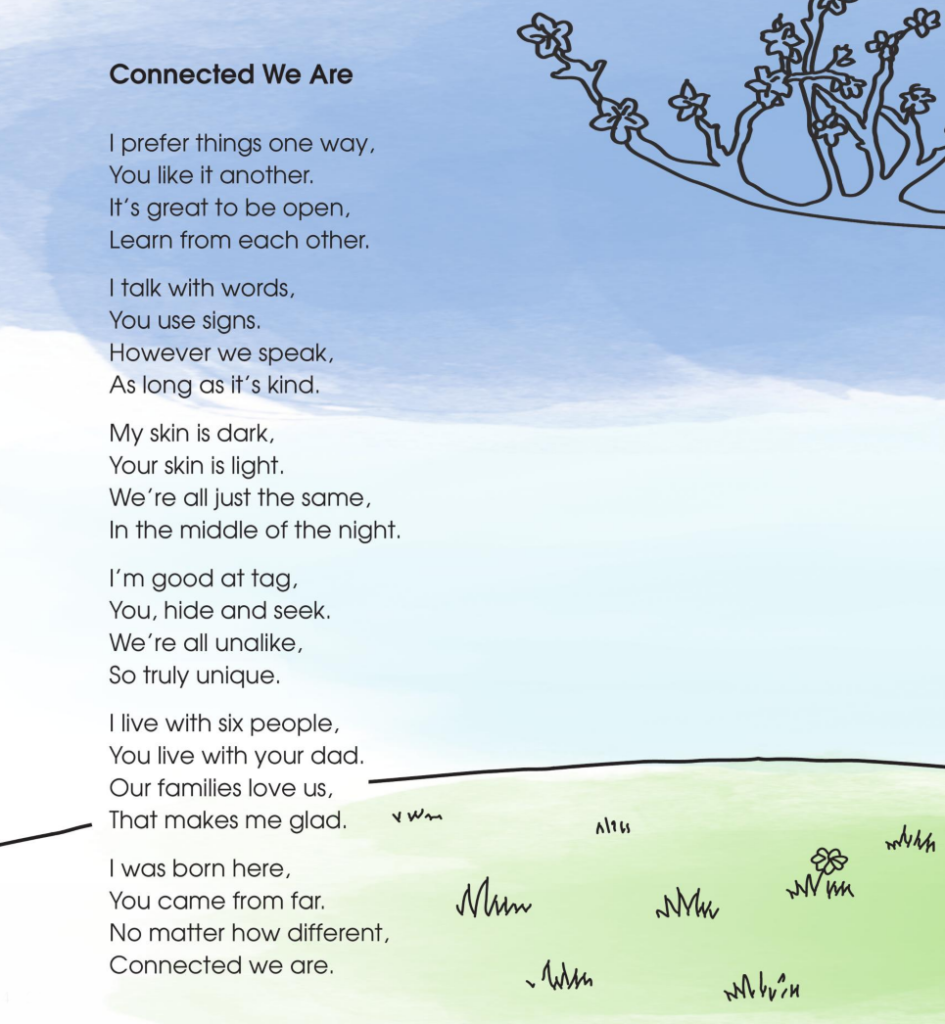
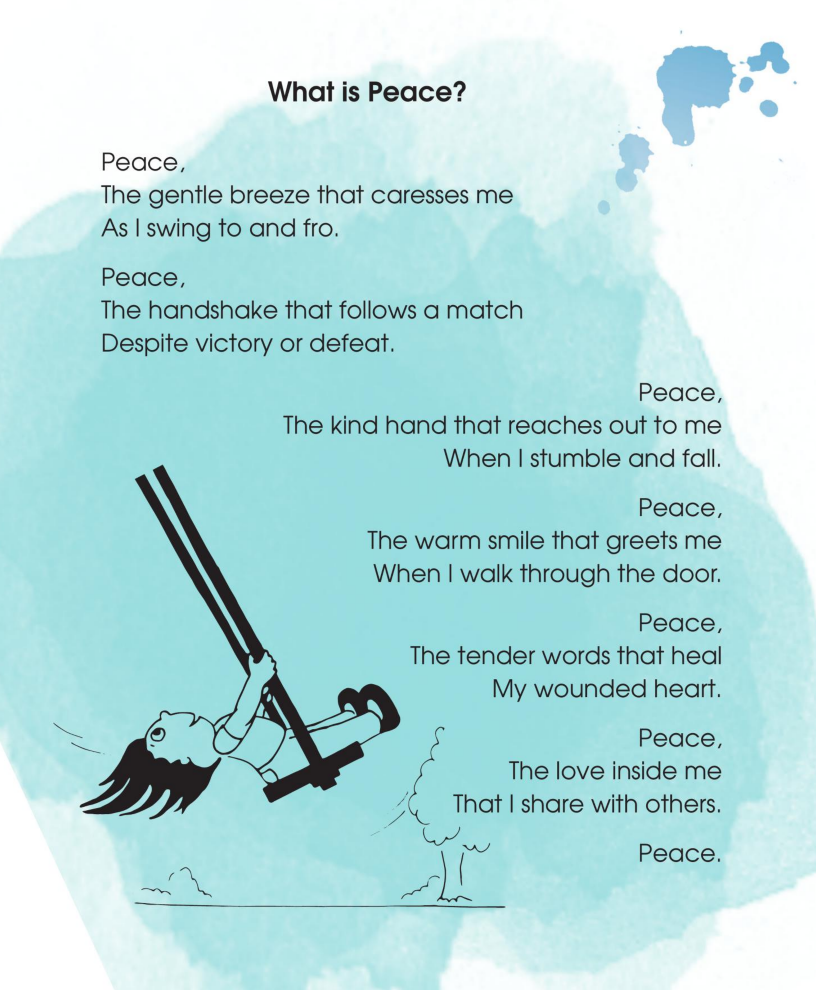
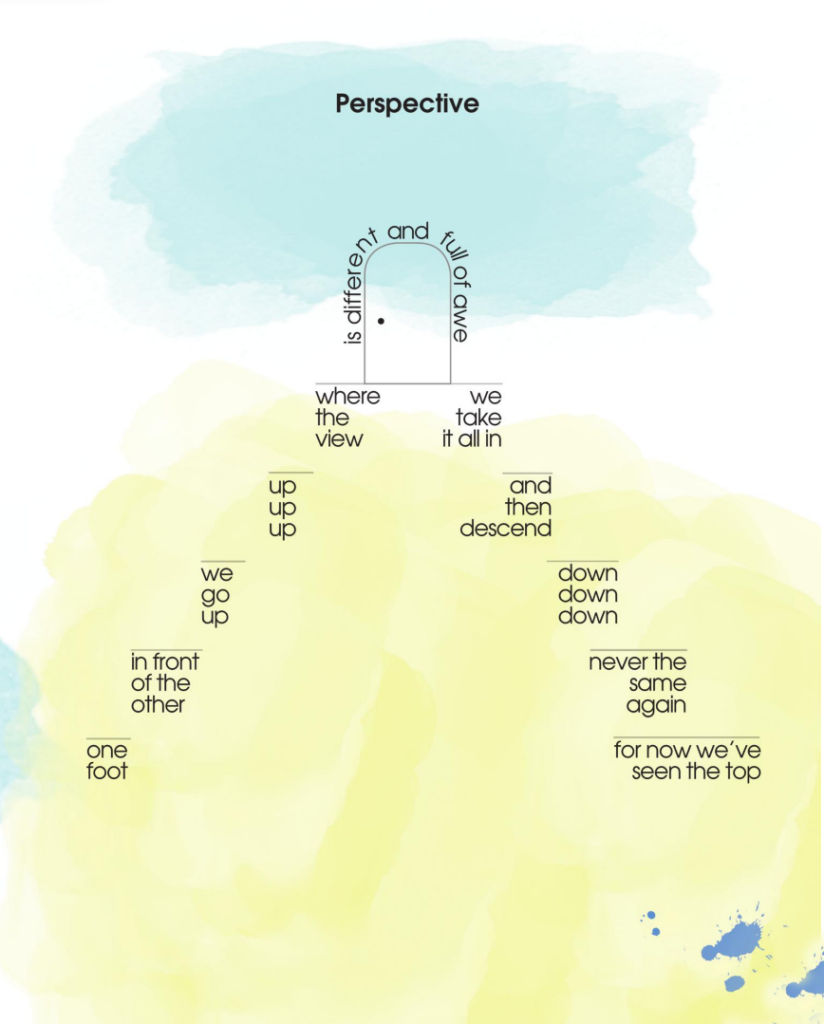
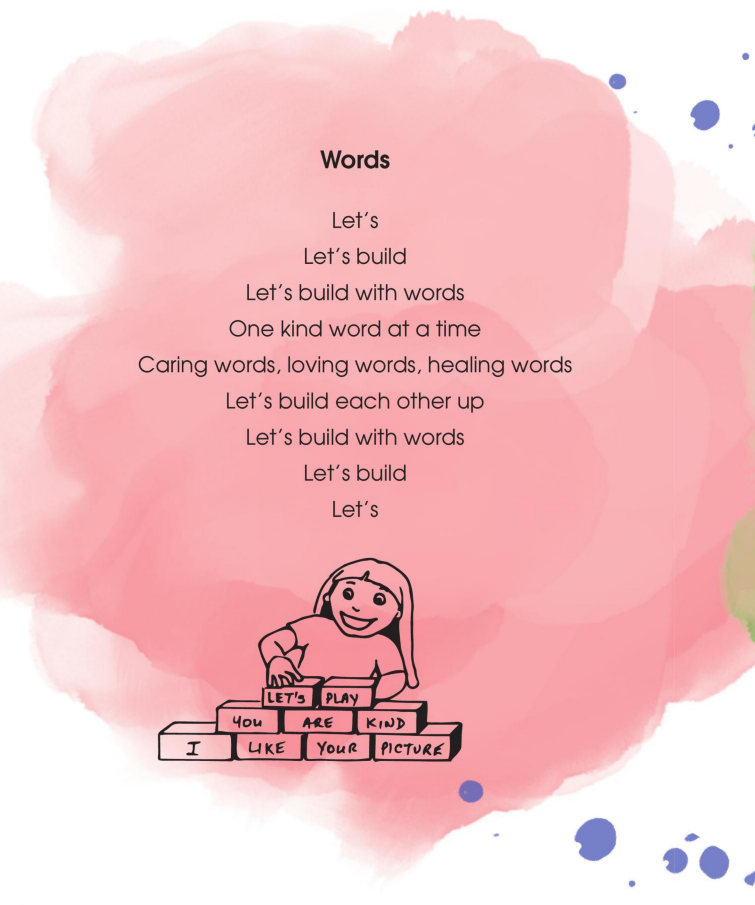
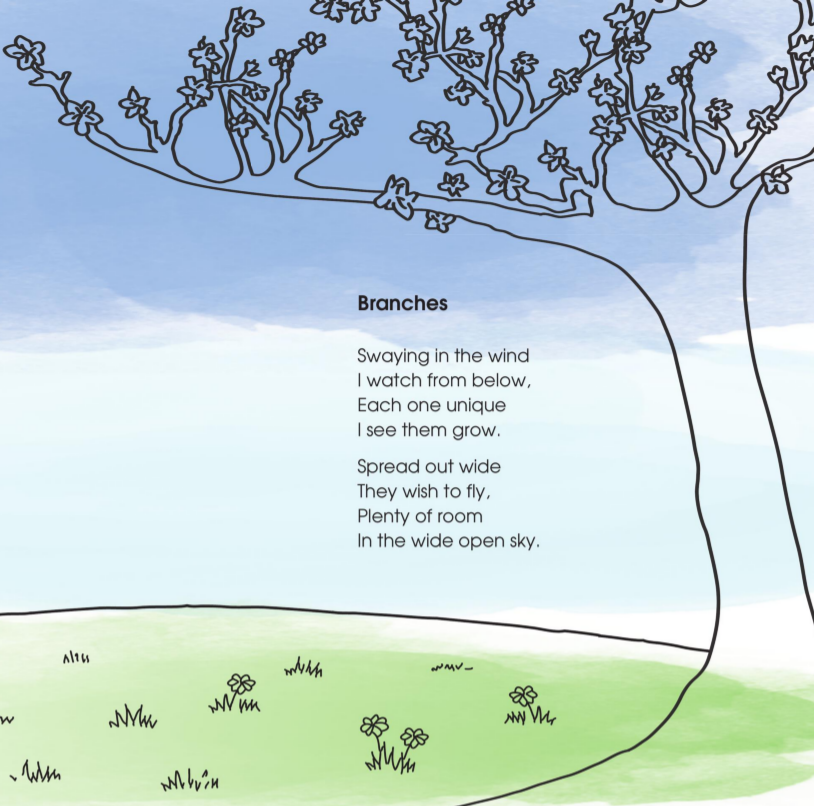
To download a free copy of the poems for your personal use at home or in the classroom, please click HERE.
I’m at a loss.
On October 7th, 2023, Hamas, an internationally recognized terror group, invaded Israel and committed unspeakable, inhumane atrocities against innocent Israeli civilians – an act that has left the global community in heart-wrenching shock.
Babies snatched from their mother’s arms, shot and beheaded.
Children axed, murdered while sleeping, tied and piled, burnt alive.
Girls raped and maimed, paraded as trophies.
Parents and children, bound, beaten, tortured in each other’s sight.
Men and women, young and old, kidnapped to a fate unknown.
Families terrorized as they answered calls, witness to their loved ones’ execution.
Pure evil.
All of this, while civilians in Gaza cheered and celebrated, proudly waving their flags and antisemitic placards. All the while, here in Canada, on our streets and school campuses, terrorist sympathizers celebrated the massacre of innocent lives, echoing vile sentiments of Jewish genocide.
Vicious. Heartbreaking. How on earth did we get here? Here, where rape is celebrated by other women. Here, where shooting Holocaust survivors is cheered post a Never Again era. Here, where slicing a mother’s womb and taking a life not yet born is glorified.

While most of the world came together in love and support, heartless human beings celebrated; celebrated the shooting, burning and beheading of children and babies!
There are simply no words.
In times of heart-wrenching tragedy and chaos, it is often educators who find themselves at the forefront of efforts to make sense of a world gone awry. I often reach out to you to recommend books for kids, enlighten you on important people in children’s literature and sometimes comment on how we see the world and how it could make sense for kids. Today, I’m reaching out to you for something completely different. Today I seek your support to help change this devastating trajectory, where the global moral compass has gone askew, where young minds can no longer decipher truth from corruption, where the media infects to breed a heartless society, while others yet, sit silently and watch.
The ensuing celebrations by terrorist sympathizers is absolutely abhorrent and inexcusable. It is indicative of an ethical decay permeating our “woke”, yet morally adrift world. While Jewish communities worldwide mourn the death of their loved ones, Hamas supporters taunt and inflict more pain to the wounds, chanting, Gas the Jews, holding signs that call to wipe Israel off the map, handing out sweets, dancing, cheering, celebrating. How on earth did we get to a place so callous and vile, a world so detached from what it means to be human? A world where the barbaric slaughter of innocent Jews is met with a call to murder all Jews worldwide? Where is the outrage?
Regrettably, this horrifying call for genocide echoes a dark and haunting chapter in history. It is a disturbing reminder of the sentiments and principles that once facilitated the systematic extermination of six million Jews during the Holocaust in Nazi Germany. This malevolent ideology thrives on vilification, dehumanization, desensitization, and unwavering justification, shamelessly parading on our streets still today, infiltrating school campuses, dominating news outlets, and permeating social media platforms.
The relentless indoctrination of young minds has left an indelible mark, grooming them with an onslaught of hate-filled propaganda directed at Israel, and by extension, Jews across the globe. This prolonged exposure has reached a point where distinguishing fact from fiction, discerning good from evil, has become an overwhelming challenge. Tragically, this distorted reality finds its expression in the odious rallies that endorse terror and violence. We witness a disheartening culmination of toxic messaging, misleading teachings, revisionist history, fake news, biased media narratives, celebrity endorsements, the intersectionality of minority groups, and the exploitation of a victimhood mentality.

In the dynamic realm of social media, words are powerful, capable of building or destroying with precision. As educators, we bear the responsibility to ensure that our students understand the gravity of their digital expressions, not falling prey to the insidious influence of memes, hashtags, likes and facile buzzwords. Words fired without comprehension are akin to firing bullets oblivious to where they land, an action both reckless and harmful.
It is our role to guide students in comprehending the impact of their words. We must equip our youth to resist the allure of the herd mentality, to withstand social pressures that may lead them to parrot ideologies they do not fully understand. The path to moral literacy in our present world necessitates the ability to discern and sift through propaganda and bias, in pursuit of what is genuine and truthful. Our mission is to raise a generation of critical thinkers, not keyboard warriors whose words aim to hurt and destroy from a detached distance.
As teachers, we must ask ourselves, where have we lacked? Where do we need more education? Is it science or math, or perhaps the injection of emotional intelligence and a sense of morality? We’ve seen this before, we’ve lived through the horror, yet the world is sleeping. The murder of six million Jews did not begin with gas chambers, it began with a wicked idea and people turning a blind eye. It began with finger pointing and blaming. It began with lies. What we see today is a new oppressor, but an old propaganda.
I remember the terror attacks on 9-11. It was 22 years ago and my first year teaching. I had a grade two class. The announcements came on and I froze as I tried to digest what I was hearing. How would I explain this to my students? After our lessons about love, respect and kindness, how would I make meaning of something that lacked all of that? Then driving home that day I heard someone on the radio quote Mr. Rogers, “Look for the helpers”. And so after the questions and digesting the facts, we focused on rebuilding with the love that poured out.
Twenty two years later, another evil has crept on our doorstep, this time targeting Jewish communities worldwide. I can only hope that my students remember my words today, and look at the massacre in Israel with nothing but compassionate eyes. I pray that today they are the helpers. This gives me hope in a world gone awry.
I’d like to end with an excerpt from a book by Dr. Chaim Ginott’s, “Teacher and Child.” It speaks to our role as educators, and what the world needs more of right now.
I am a survivor of a concentration camp. My eyes saw what no person should witness: gas chambers built by learned engineers. Children poisoned by educated physicians. Infants killed by trained nurses. Women and babies shot by high school and college graduates. So, I am suspicious of education. My request is this: Help your children become human. Your efforts must never produce learned monsters, skilled psychopaths or educated Eichmanns. Reading, writing, and arithmetic are important only if they serve to make our children more human.
As Remembrance Day approaches, we are reminded of the sacrifices made for a better tomorrow. This moment of reflection serves as a poignant reminder of our duty as educators to steer our students away from moral decay. Let this day inspire us to embrace our role, engage in meaningful conversations, and cultivate empathy in the young minds we nurture. As we remember the past, let us also shape a more compassionate and ethical future, where the values that underpin our society are not commodities, but pillars of our shared humanity.
With deep empathy and hope for a kinder future,
Lora
As a parent, we want to instill positive values in our children, and one of the most important ones is gratitude. Gratitude is the act of being thankful for the good things in our lives, big or small. Teaching young kids about gratitude is crucial because it helps them develop a positive mindset, and studies have shown that practicing gratitude leads to better mental health, stronger relationships, and a happier life. Here’s why teaching young kids about the importance of gratitude matters.
Gratitude promotes happiness and well-being
Research has shown that gratitude can have a positive impact on our overall well-being. A study conducted by the University of California found that people who regularly practiced gratitude reported feeling more positive emotions, had better sleep, and experienced fewer symptoms of illness compared to those who didn’t practice thankfulness. When we teach our kids to be thankful for the good things in their lives, it helps them focus on the positive and build better relationships with their peers.
Gratitude strengthens relationships
Teaching children to express gratitude towards others can help them build stronger relationships with family and friends. It’s important for kids to learn to say thank you when someone does something kind for them. This can be as simple as saying thank you to a teacher for helping them with a project or thanking a friend for inviting them to a playdate. When kids learn to show gratitude towards others, it helps them build empathy and compassion, which are essential for healthy relationships.
Gratitude improves self-esteem
When we practice gratitude, it helps us focus on what we have instead of what we don’t have. This can be especially important for kids who may compare themselves to others and feel like they don’t measure up. Encouraging kids to be thankful for their unique talents and abilities can help them develop a positive self-image and boost their self-esteem.
Gratitude teaches resilience
Life can be tough, and there will be times when things don’t go as planned. However, when we practice gratitude, it helps us focus on the good things in our lives, even during difficult times. When we teach our kids to be thankful for what they have, it can help them develop resilience and cope better with life’s challenges.
So, how can we teach our kids about gratitude? Here are some tips:
Lead by example
Children learn by example, so it’s important for parents to model gratitude in their own lives. Make it a point to express gratitude towards your kids, partner, and others in your life. Let your kids see you say thank you to the cashier at the grocery store or express gratitude towards a friend who helped you out.
Make it a habit
Teaching kids about gratitude is something that needs to be practiced regularly. Make it a habit to ask your kids what they are thankful for each day, and encourage them to write it down in a gratitude journal. This can be as simple as asking, “What was the best part of your day today?” or “What are you grateful for right now?“
Focus on the positive
When teaching your kids, it’s important for you to focus on the positive. Instead of complaining about what you don’t have, focus on what you do have and express gratitude for it. Encourage your kids to do the same.
Teaching young kids about gratitude is an essential part of parenting. Practicing gratitude can lead to increased happiness, stronger relationships, and better mental health. By modeling gratitude in our own lives and making it a regular habit, we can help our kids develop a positive mindset and build resilience for the future.
Suggested reading with your child:
I’m excited to announce the release of my latest picture book, Bear. This one is especially close to my heart! Almost two years ago I lost my father to ALS. Through the heartache I found peace in Bear, a story about love, loss, and connection after losing a loved one.
Bear was the name of Grandpa’s favourite chair. It was big and brown and furry. It had buttons that made the chair go up and down, and even helped you stand. But what made it really special was the memories that lingered long after Grandpa was gone. Bear is a tender and comforting tale for young readers that celebrates life and the significance of the moments we hold dear when a loved one passes away. Bear explores themes of love, loss and connection in a life-affirming and uplifting tale, reminding us that those we cherish are never more than a memory away.
Publication Date: November 22, 2020
Available in major retailers including Amazon | Barnes and Noble
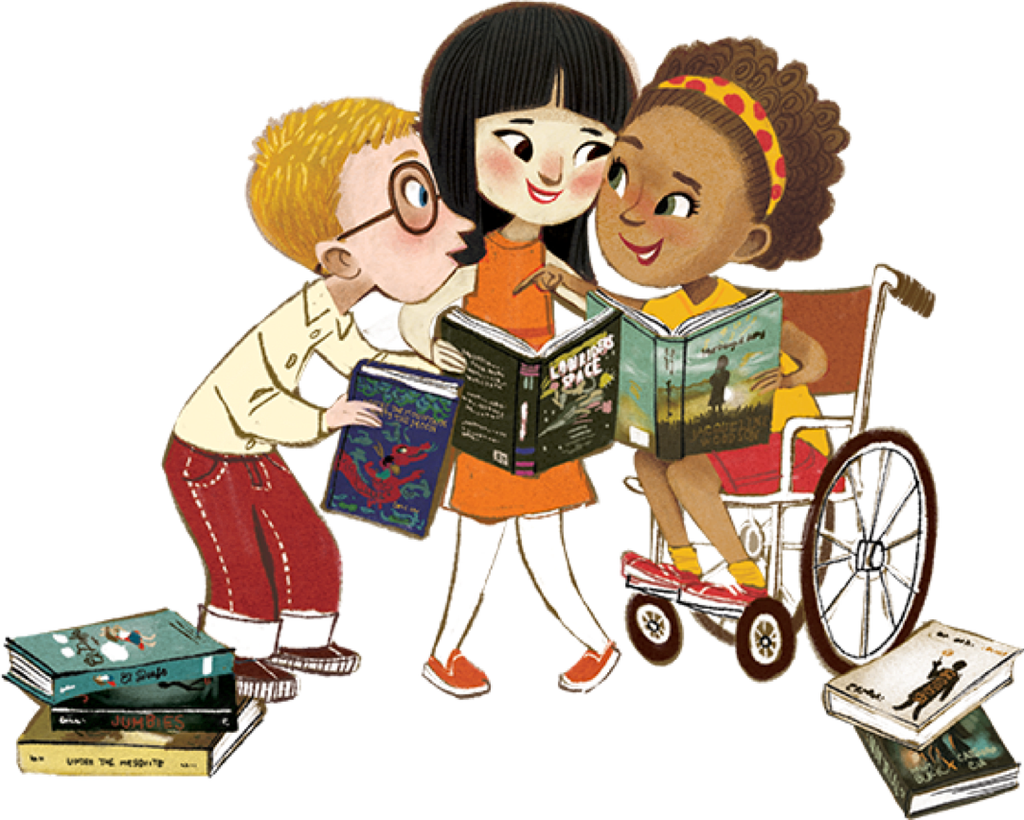 Whether it be in your classroom or your home, it’s not always easy to start difficult conversations or clarify confusing times for children. But the best conversations can begin with a story. They are a great way to expose children to different narratives and teach them about people outside of their immediate family. Having a diverse range of books can be a powerful tool in teaching children about tolerance and acceptance, all the while celebrating uniqueness and individuality. With that in mind, I’ve put together a list of books to help begin important discussions, not only about race, but also about inclusion, diversity and the differences that make us special.
Whether it be in your classroom or your home, it’s not always easy to start difficult conversations or clarify confusing times for children. But the best conversations can begin with a story. They are a great way to expose children to different narratives and teach them about people outside of their immediate family. Having a diverse range of books can be a powerful tool in teaching children about tolerance and acceptance, all the while celebrating uniqueness and individuality. With that in mind, I’ve put together a list of books to help begin important discussions, not only about race, but also about inclusion, diversity and the differences that make us special.
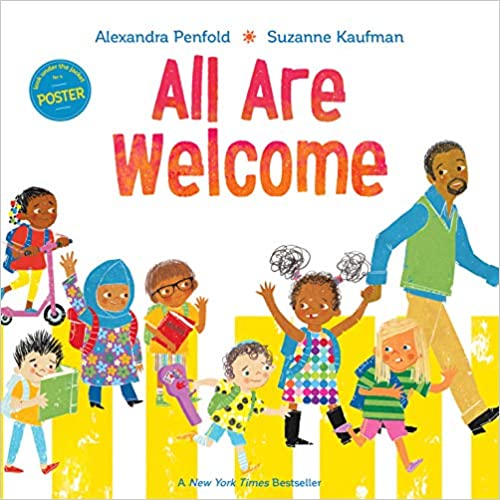 Follow a group of children through a day in their school, where everyone is welcomed with open arms. A school where kids in patkas, hijabs, and yarmulkes play side-by-side with friends in baseball caps. A school where students grow and learn from each other’s traditions and the whole community gathers to celebrate the Lunar New Year.
Follow a group of children through a day in their school, where everyone is welcomed with open arms. A school where kids in patkas, hijabs, and yarmulkes play side-by-side with friends in baseball caps. A school where students grow and learn from each other’s traditions and the whole community gathers to celebrate the Lunar New Year.

Lily and Salma are best friends. They like doing all the same things, and they always eat lunch together. Lily eats peanut butter and Salma eats hummus-but what’s that between friends? It turns out, a lot. Before they know it, a food fight breaks out. Can Lily and Salma put aside their differences? Or will a sandwich come between them? The smallest things can pull us apart-until we learn that friendship is far more powerful than difference.
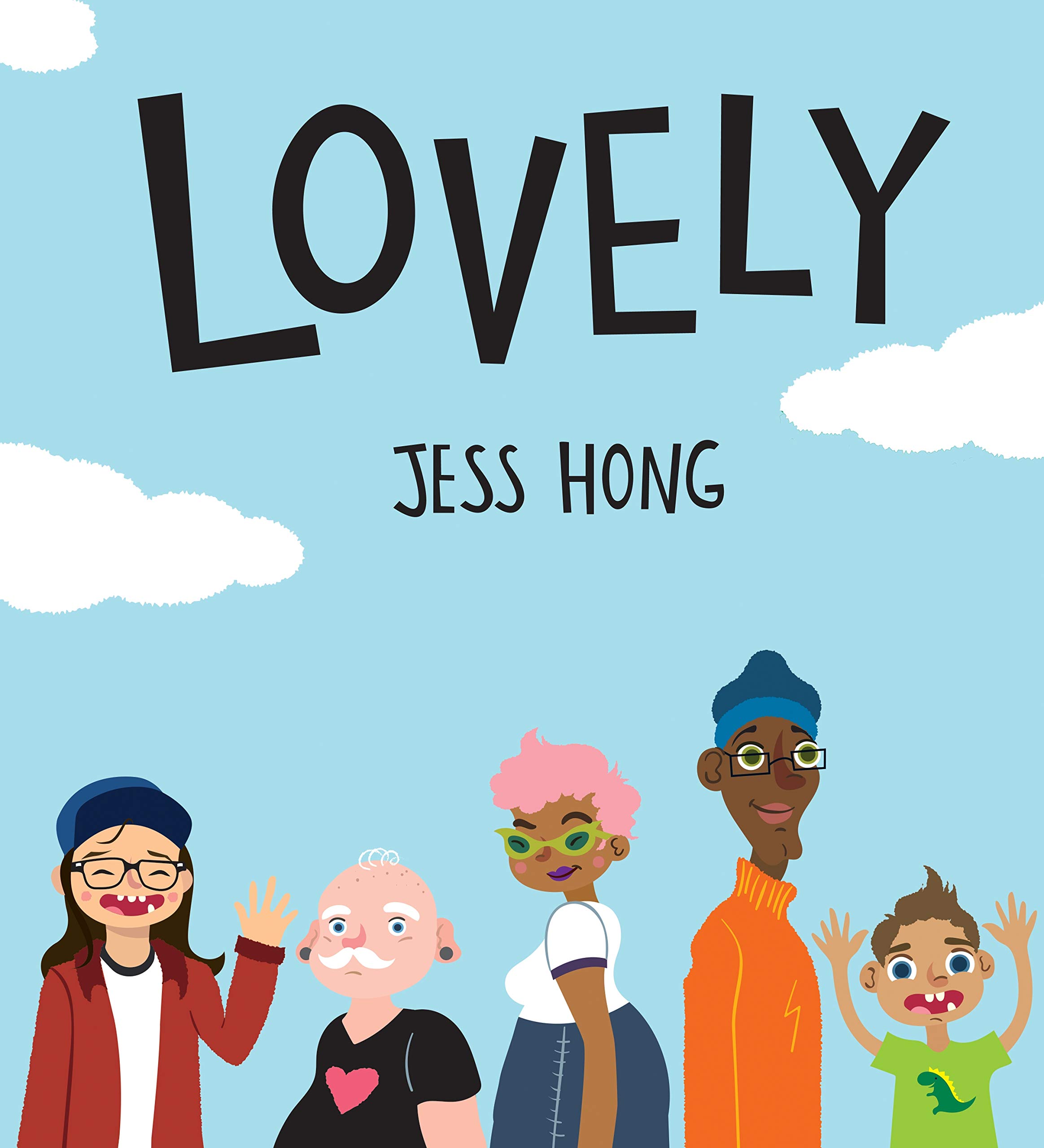
Big, small, curly, straight, loud, quiet, smooth, wrinkly. Lovely explores a world of differences that all add up to the same thing: we are all lovely! The simple, minimal text shows opposites: “black”—represented by a white woman in all black, “white”—a black woman with white hair, but includes them all under the umbrella of “lovely.”
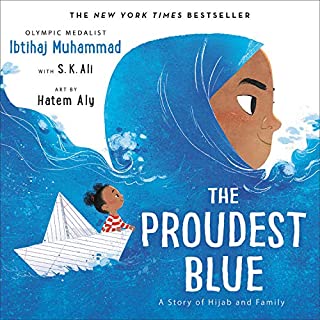
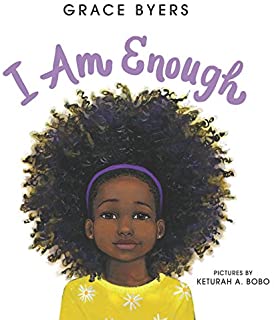 “Like the sun, I’m here to shine,” the rhyming text begins, and each page that follows offers an affirmation of all the strength, talent, and promise that young girls have within them. While praising their inherent strengths and virtues, the text also encourages girls to show kindness, to be fighters, and to accept their fellow female for who she is and embrace all the unique qualities that make her that way. And no matter what, to know that no matter what the world expects of her or tells her she must be, she needs only to remind herself of the truth: “I am enough.”
“Like the sun, I’m here to shine,” the rhyming text begins, and each page that follows offers an affirmation of all the strength, talent, and promise that young girls have within them. While praising their inherent strengths and virtues, the text also encourages girls to show kindness, to be fighters, and to accept their fellow female for who she is and embrace all the unique qualities that make her that way. And no matter what, to know that no matter what the world expects of her or tells her she must be, she needs only to remind herself of the truth: “I am enough.”
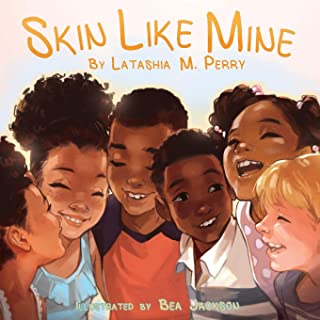
Skin Like Mine is a fun and creative way to address and celebrate diversity among young children. It emphasizes the importance of not only accepting others, but accepting and loving yourself. This story compares skin colors with foods instead of with other people. From brownies, cakes, and caramel, this book is a lighthearted way of breaking the barrier down when talking about different skin colors and loving the body we were given.
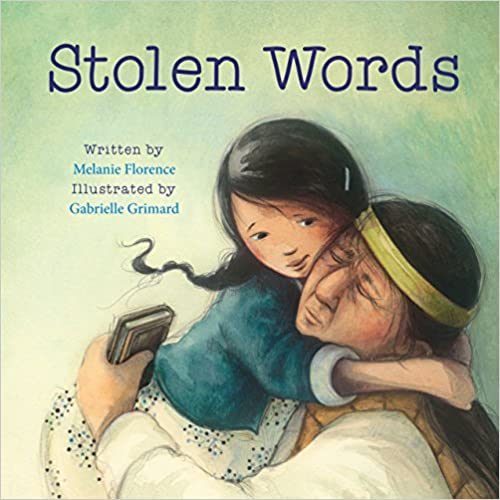 The story of the beautiful relationship between a little girl and her grandfather. When she asks her grandfather how to say something in his language – Cree – he admits that his language was stolen from him when he was a boy. The little girl then sets out to help her grandfather find his language again. This sensitive and warmly illustrated picture book explores the inter-generational impact of the residential school system that separated young Indigenous children from their families.
The story of the beautiful relationship between a little girl and her grandfather. When she asks her grandfather how to say something in his language – Cree – he admits that his language was stolen from him when he was a boy. The little girl then sets out to help her grandfather find his language again. This sensitive and warmly illustrated picture book explores the inter-generational impact of the residential school system that separated young Indigenous children from their families.
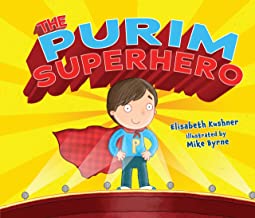 Nate has a tough decision to make. Purim, a Jewish holiday, celebrated in part by the wearing of costumes, is coming up, and Nate has to decide between being an alien, his all-time favorite thing, or being a superhero like the rest of the boys in his class. He wants to fit in with his friends, but he really wants to be an alien. With the help of his two dads and his sister, he comes up with a costume that works for him. One of his dads shares the story of Queen Esther to help Nate see the value in being who you really are, even if it’s different from other people. Through the support of his family, Nate decides to be both brave, like a superhero, and original, like himself, to become a “super alien.” A really nice picture book about self-expression.
Nate has a tough decision to make. Purim, a Jewish holiday, celebrated in part by the wearing of costumes, is coming up, and Nate has to decide between being an alien, his all-time favorite thing, or being a superhero like the rest of the boys in his class. He wants to fit in with his friends, but he really wants to be an alien. With the help of his two dads and his sister, he comes up with a costume that works for him. One of his dads shares the story of Queen Esther to help Nate see the value in being who you really are, even if it’s different from other people. Through the support of his family, Nate decides to be both brave, like a superhero, and original, like himself, to become a “super alien.” A really nice picture book about self-expression.
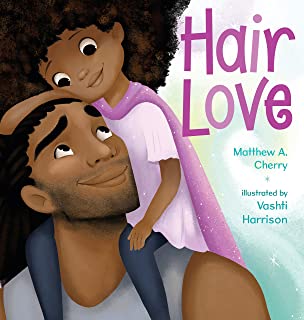
Zuri’s hair has a mind of its own. It kinks, coils, and curls every which way. Zuri knows it’s beautiful. When Daddy steps in to style it for an extra special occasion, he has a lot to learn. But he LOVES his Zuri, and he’ll do anything to make her, and her hair happy. Tender and empowering, Hair Love is an ode to loving your natural hair and a celebration of daddies and daughters everywhere.
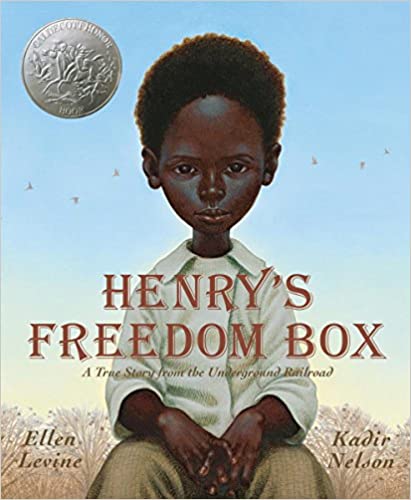 Henry Brown doesn’t know how old he is. Nobody keeps records of slaves’ birthdays. All the time he dreams about freedom, but that dream seems farther away than ever when he is torn from his family and put to work in a warehouse. Henry grows up and marries, but he is again devastated when his family is sold at the slave market. Then one day, as he lifts a crate at the warehouse, he knows exactly what he must do: He will mail himself to the North. After an arduous journey in the crate, Henry finally has a birthday — his first day of freedom.
Henry Brown doesn’t know how old he is. Nobody keeps records of slaves’ birthdays. All the time he dreams about freedom, but that dream seems farther away than ever when he is torn from his family and put to work in a warehouse. Henry grows up and marries, but he is again devastated when his family is sold at the slave market. Then one day, as he lifts a crate at the warehouse, he knows exactly what he must do: He will mail himself to the North. After an arduous journey in the crate, Henry finally has a birthday — his first day of freedom.

Elliot lives in America, and Kailash lives in India. They are pen pals. By exchanging letters and pictures, they learn that they both love to climb trees, have pets, and go to school. Their worlds might look different, but they are actually similar. Same, same. But different!
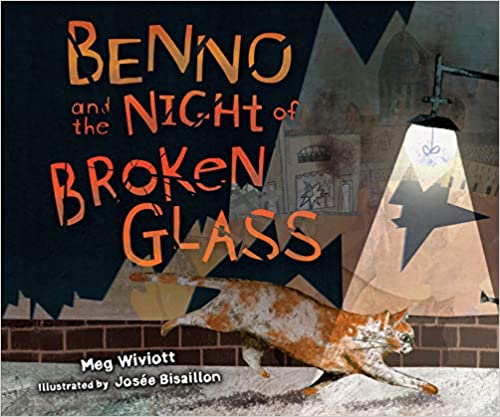
A neighborhood cat observes the changes in German and Jewish families in its town during the period leading up to the Night of Broken Glass – that becomes the true beginning of the Holocaust. This cats-eye view introduces the Holocaust to children in a gentle way that can open discussion of this period.
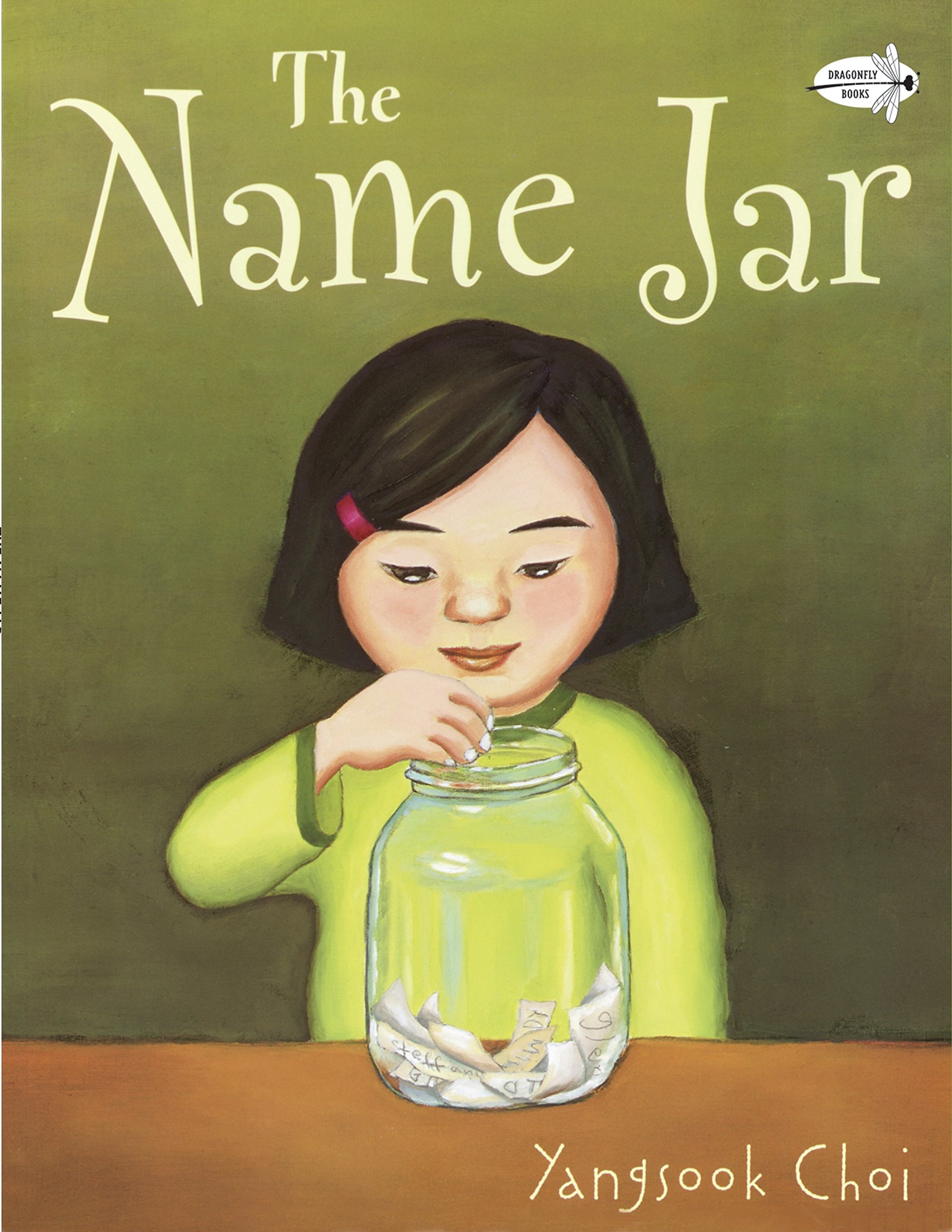 The new kid in school needs a new name! Or does she? Being the new kid in school is hard enough, but what about when nobody can pronounce your name? Having just moved from Korea, Unhei is anxious that American kids will like her. So instead of introducing herself on the first day of school, she tells the class that she will choose a name by the following week. Her new classmates are fascinated by this no-name girl and decide to help out by filling a glass jar with names for her to pick from. But while Unhei practices being a Suzy, Laura, or Amanda, one of her classmates comes to her neighborhood and discovers her real name and its special meaning. On the day of her name choosing, the name jar has mysteriously disappeared. Encouraged by her new friends, Unhei chooses her own Korean name and helps everyone pronounce it—Yoon-Hey.
The new kid in school needs a new name! Or does she? Being the new kid in school is hard enough, but what about when nobody can pronounce your name? Having just moved from Korea, Unhei is anxious that American kids will like her. So instead of introducing herself on the first day of school, she tells the class that she will choose a name by the following week. Her new classmates are fascinated by this no-name girl and decide to help out by filling a glass jar with names for her to pick from. But while Unhei practices being a Suzy, Laura, or Amanda, one of her classmates comes to her neighborhood and discovers her real name and its special meaning. On the day of her name choosing, the name jar has mysteriously disappeared. Encouraged by her new friends, Unhei chooses her own Korean name and helps everyone pronounce it—Yoon-Hey.
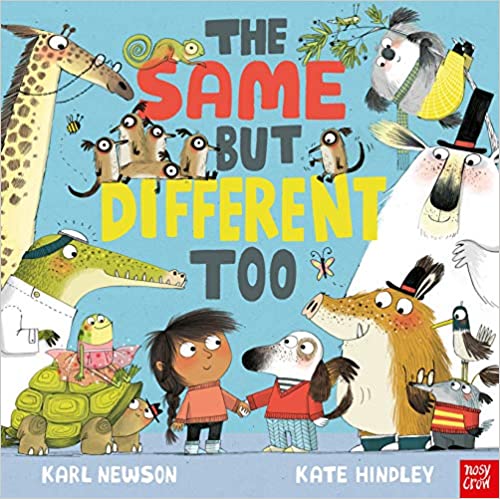 These children and animals are all very different to each other. Some are big, some are small. Some are gentle, some are rough. Everyone is playful, but who’s the best at hiding? One thing’s certain: they all love a good bedtime story! The perfect picture book for little ones who are just beginning to make sense of their place in the world.
These children and animals are all very different to each other. Some are big, some are small. Some are gentle, some are rough. Everyone is playful, but who’s the best at hiding? One thing’s certain: they all love a good bedtime story! The perfect picture book for little ones who are just beginning to make sense of their place in the world.
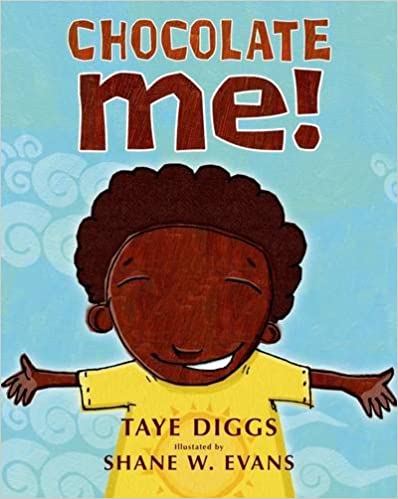
A timely book about how it feels to be teased and taunted, and how each of us is sweet and lovely and delicious on the inside, no matter how we look.The boy is teased for looking different than the other kids. His skin is darker, his hair curlier. He tells his mother he wishes he could be more like everyone else. And she helps him to see how beautiful he really, truly is.

Once a skinny and weak child, Gino Bartali rose to become a Tour de France champion and one of cycling’s greatest stars. But all that seemed unimportant when his country came under the grip of a brutal dictator and entered World War II on the side of Nazi Germany. Bartali might have appeared a mere bystander to the harassment and hatred directed toward Italys Jewish people, but secretly he accepted a role in a dangerous plan to help them. Putting his own life at risk, Bartali used his speed and endurance on a bike to deliver documents Jewish people needed to escape harm. His inspiring story reveals how one person could make a difference against violence and prejudice during the time of the Holocaust.
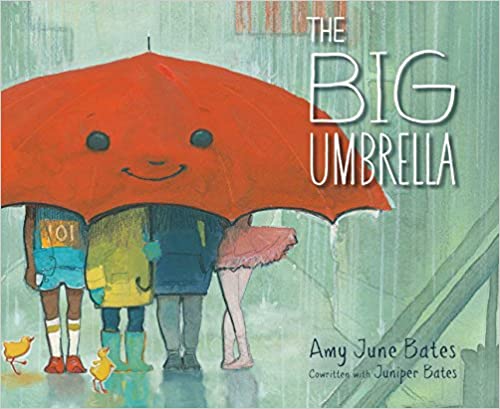
By the door there is an umbrella. It is big. It is so big that when it starts to rain there is room for everyone underneath. It doesn’t matter if you are tall. Or plaid. Or hairy. It doesn’t matter how many legs you have. Don’t worry that there won’t be enough room under the umbrella. Because there will always be room. A timeless picture book about acceptance.
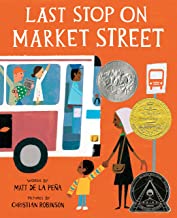
Every Sunday after church, CJ and his grandma ride the bus across town. But today, CJ wonders why they don’t own a car like his friend Colby. Why doesn’t he have an iPod like the boys on the bus? How come they always have to get off in the dirty part of town? Each question is met with an encouraging answer from grandma, who helps him see the beauty—and fun—in their routine and the world around them.
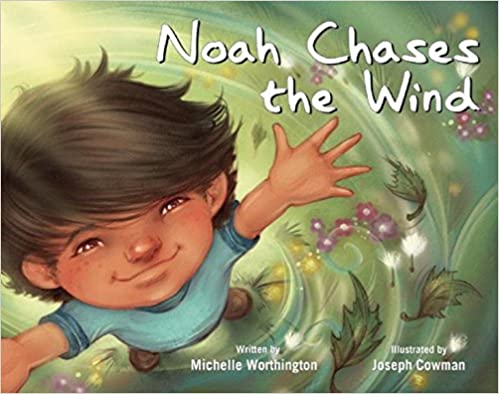 Noah is different. He sees, hears, feels, and thinks in ways that other people don’t always understand, and he asks a lot of questions along the way. Noah loves science, especially the weather. His books usually provide him with the answers he needs, until one day, there’s one question they don’t answer—and that is where Noah’s windy adventure begins.This book celebrates the inquisitive nature of all children, including those on the autism spectrum, who cannot stop asking a question until an answer has been unearthed. The book contains a page of information for parents, caregivers, and educators about the importance of helping children feel good about their differences and know that being different is okay.
Noah is different. He sees, hears, feels, and thinks in ways that other people don’t always understand, and he asks a lot of questions along the way. Noah loves science, especially the weather. His books usually provide him with the answers he needs, until one day, there’s one question they don’t answer—and that is where Noah’s windy adventure begins.This book celebrates the inquisitive nature of all children, including those on the autism spectrum, who cannot stop asking a question until an answer has been unearthed. The book contains a page of information for parents, caregivers, and educators about the importance of helping children feel good about their differences and know that being different is okay.
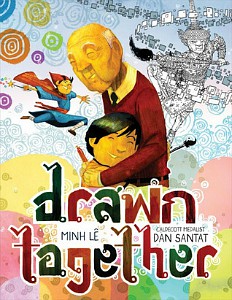 A young boy dreads his visits to his grandfather. They don’t share a language, so their time together is strained, awkward, and silent. Until they discover a shared love of drawing. Together, they find a common language through art. Drawn Together shows that meaningful relationships are possible even across communication barriers, and as their illustration styles start to blend together, it shows the connections they’ve made without words.
A young boy dreads his visits to his grandfather. They don’t share a language, so their time together is strained, awkward, and silent. Until they discover a shared love of drawing. Together, they find a common language through art. Drawn Together shows that meaningful relationships are possible even across communication barriers, and as their illustration styles start to blend together, it shows the connections they’ve made without words.
 The Family Book celebrates the love we feel for our families and all the different varieties they come in. Whether you have two moms or two dads, a big family or a small family, a clean family or a messy one, Todd Parr assures readers that no matter what kind of family you have, every family is special in its own unique way.
The Family Book celebrates the love we feel for our families and all the different varieties they come in. Whether you have two moms or two dads, a big family or a small family, a clean family or a messy one, Todd Parr assures readers that no matter what kind of family you have, every family is special in its own unique way.
 The journey starts on a sunny day in New York City and ends on a beautiful San Francisco night, with stops in Mexico City, Rio de Janeiro, London, Paris, Cape Town, Cairo, Beijing, and Tokyo. These friendly babies welcome us to their cities with delightful greetings in their original languages (with English translations) in a simple narration that will appeal to any global mini citizen.
The journey starts on a sunny day in New York City and ends on a beautiful San Francisco night, with stops in Mexico City, Rio de Janeiro, London, Paris, Cape Town, Cairo, Beijing, and Tokyo. These friendly babies welcome us to their cities with delightful greetings in their original languages (with English translations) in a simple narration that will appeal to any global mini citizen.
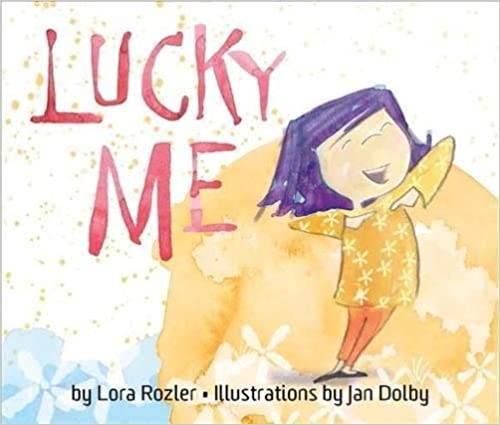 Lucky Me invites readers on a journey around the world to explore life’s simplest, yet often overlooked treasures. Pages come alive with a series of evocative, gratitude-filled messages, accompanied by Thank-yous translated into various languages, emphasizing global diversity.
Lucky Me invites readers on a journey around the world to explore life’s simplest, yet often overlooked treasures. Pages come alive with a series of evocative, gratitude-filled messages, accompanied by Thank-yous translated into various languages, emphasizing global diversity.
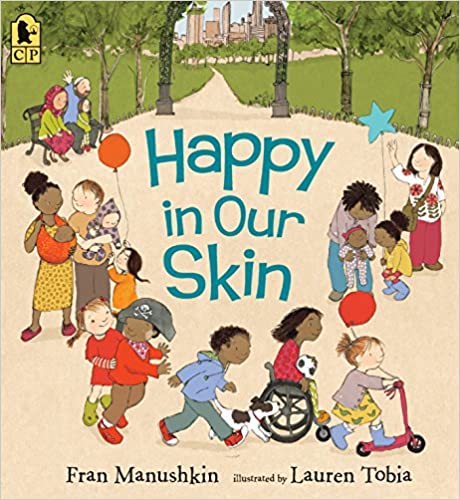 Is there anything more splendid than a baby’s skin? Cocoa-brown, cinnamon, peaches and cream. As children grow, their clever skin does, too, enjoying hugs and tickles, protecting them inside and out, and making them one of a kind. Fran Manushkin’s rollicking text and Lauren Tobia’s delicious illustrations paint a breezy and irresistible picture of the human family — and how wonderful it is to be just who you are.
Is there anything more splendid than a baby’s skin? Cocoa-brown, cinnamon, peaches and cream. As children grow, their clever skin does, too, enjoying hugs and tickles, protecting them inside and out, and making them one of a kind. Fran Manushkin’s rollicking text and Lauren Tobia’s delicious illustrations paint a breezy and irresistible picture of the human family — and how wonderful it is to be just who you are.
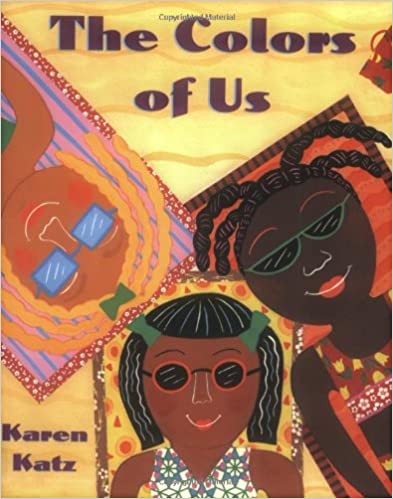
Seven-year-old Lena is going to paint a picture of herself. She wants to use brown paint for her skin. But when she and her mother take a walk through the neighborhood, Lena learns that brown comes in many different shades. Through the eyes of a little girl who begins to see her familiar world in a new way, this book celebrates the differences and similarities that connect all people.
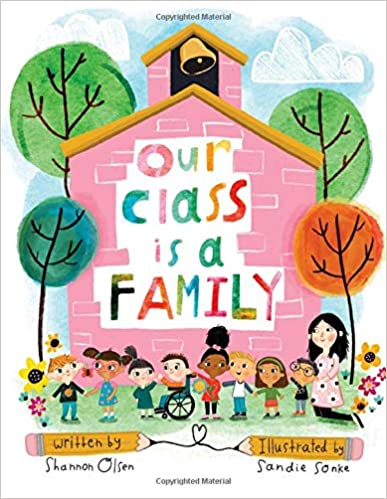 With its heartfelt message and colorfully whimsical illustrations, “Our Class is a Family” is a book that will help build and strengthen that class community. Kids learn that their classroom is a place where it’s safe to be themselves, it’s okay to make mistakes, and it’s important to be a friend to others. When hearing this story being read aloud by their teacher, students are sure to feel like they are part of a special family.
With its heartfelt message and colorfully whimsical illustrations, “Our Class is a Family” is a book that will help build and strengthen that class community. Kids learn that their classroom is a place where it’s safe to be themselves, it’s okay to make mistakes, and it’s important to be a friend to others. When hearing this story being read aloud by their teacher, students are sure to feel like they are part of a special family.
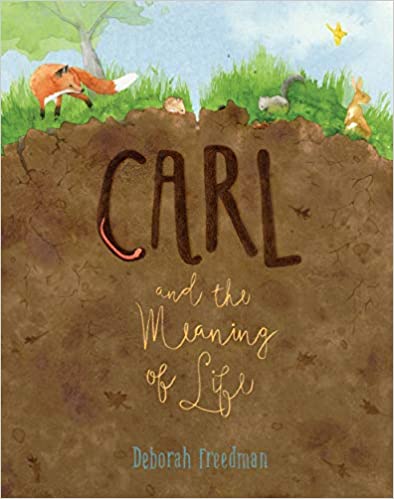
Carl is an earthworm. He spends his days happily tunneling in the soil until a field mouse asks him a simple question that stops him short: “Why?” Carl’s quest takes him on an adventure to meet all the animals of the forest, each of whom seems to know exactly what they were put on this earth to do, unlike the curious Carl. But it’s not until the world around him has changed that Carl begins to realize everyone, no matter how small, makes a big difference just by being themselves.
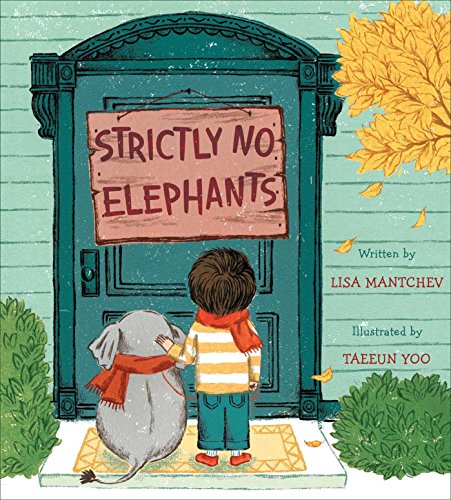 Today is Pet Club day. There will be cats and dogs and fish, but strictly no elephants are allowed. The Pet Club doesn’t understand that pets come in all shapes and sizes, just like friends. Now it is time for a boy and his tiny pet elephant to show them what it means to be a true friend. A sweet story of friendship, acceptance, and inclusion.
Today is Pet Club day. There will be cats and dogs and fish, but strictly no elephants are allowed. The Pet Club doesn’t understand that pets come in all shapes and sizes, just like friends. Now it is time for a boy and his tiny pet elephant to show them what it means to be a true friend. A sweet story of friendship, acceptance, and inclusion.

Celebrating all that makes us unique and different, Skin Again offers new ways to talk about race and identity. Race matters, but only so much–what’s most important is who we are on the inside. Looking beyond skin, going straight to the heart, we find in each other the treasures stored down deep. Learning to cherish those treasures, to be all we imagine ourselves to be, makes us free.
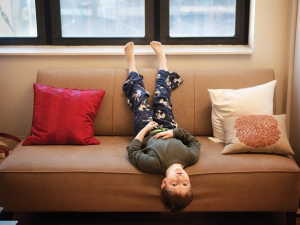 So we’ve been cooped up at home for quite some time now due to the pandemic. For us adults, the use of technology plays a pertinent role in maintaining our social connection to the outside world. But for the little ones whose main form of socialization stems from the school environment, this can be especially difficult.
So we’ve been cooped up at home for quite some time now due to the pandemic. For us adults, the use of technology plays a pertinent role in maintaining our social connection to the outside world. But for the little ones whose main form of socialization stems from the school environment, this can be especially difficult.
Social distancing keeps our children physically safe but how do we ensure they don’t socially wilt during this era of isolation?
Here are some simple ways to help your child stay connected to family and friends and develop important skills while doing so:
Talking over the phone helps children learn how to start (and end) conversations, engage in a back and forth dialogue (understand the reciprocity of communication), improve attention span, increase vocabulary, build empathy, give insight into other’s lives, develop oral language skills (speaking, listening, questioning, clarifying, rephrasing) as well as build and maintain friendships.
Video chatting can also allow children to introduce another branch of topics into their conversation. We all know from Show and Tell that children love to talk about their favourite toys and share their work with others. Video chatting allows for this kind of engagement more readily (and gives you a bit of a break).
Just as physical exercise helps in improving and strengthening muscles, cognitive games can help with cognitive functions. It can help improve coordination, memory, attention, concentration, as well as problem-solving and social skills.
Letter-writing does not only help children stay connected, but also reinforces important literacy skills and concepts. Writing letters can also be a lot of fun, especially if you can include different kinds of stationary, writing material, decorative stickers, stamps, and photos. The more creative children can get, the more they will gravitate toward this form of communication.
To introduce my students to the format of letter-writing, I wrote and shared a new poem with them, titled I Wrote a Letter.

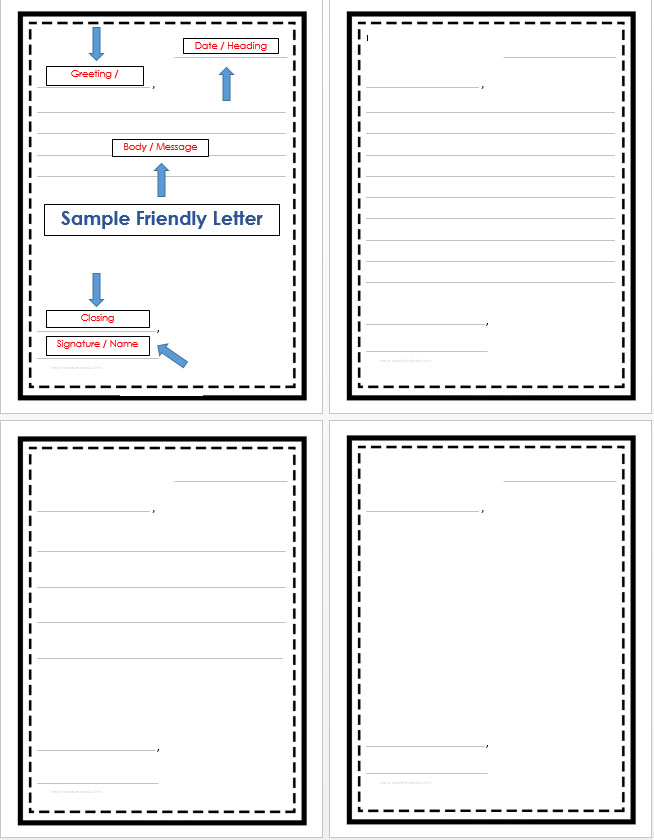
The poem highlights the five elements of a friendly letter in a fun and lyrical way. If you are interested in downloading a copy for your personal use at home or in the classroom, please head over to my TPT store HERE to get the complete package. It includes three letter-writing templates (to accommodate different writing stages) and a sample page with headings.
Everyone loves to get mail, especially a nice note addressed just to them. Introducing this form of communication to your child will open up a new world to them, especially in today’s technological age where this is becoming a rarity.
Be well, stay safe and stay connected!
Lora

I Wrote a Letter by Lora Rozler is licensed under a Creative Commons Attribution-NonCommercial-NoDerivatives 4.0 International License.
Here are some amazing books to have on your bookshelf at home.
 Fantastic book introducing kids to the concepts of discovery, relationships, the need to belong, bullying and adventure. Available in French as well.
Fantastic book introducing kids to the concepts of discovery, relationships, the need to belong, bullying and adventure. Available in French as well.
Amazon
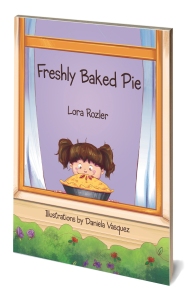 Cute story book about a little girl and her conversation with a pie. Kids will love the delightful illustrations and the engaging story. Never has examining rules and consequences been so much fun.
Cute story book about a little girl and her conversation with a pie. Kids will love the delightful illustrations and the engaging story. Never has examining rules and consequences been so much fun.
Amazon
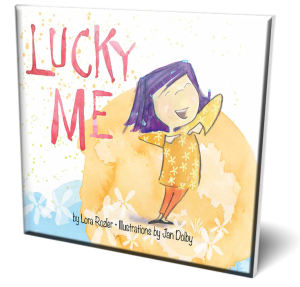 This dynamic, beautifully illustrated picture book explores how the world says Thank You. Kids will discover the importance of gratitude in their everyday life.
This dynamic, beautifully illustrated picture book explores how the world says Thank You. Kids will discover the importance of gratitude in their everyday life.
Amazon
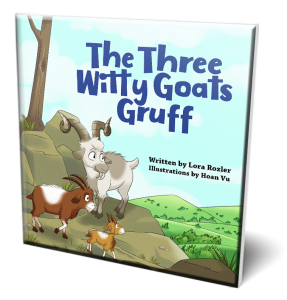 A charming and gorgeously illustrated adaptation of the old time favourite. Kids will enjoy the engaging conversations between the clever goats and the fearsome troll.
A charming and gorgeously illustrated adaptation of the old time favourite. Kids will enjoy the engaging conversations between the clever goats and the fearsome troll.
Amazon
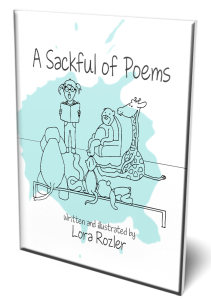 This inspiring collection of poems for children range in topic from educational to humourous, from seasonal to downright heartwarming. With over 90 pages of poems that will become timely treasures.
This inspiring collection of poems for children range in topic from educational to humourous, from seasonal to downright heartwarming. With over 90 pages of poems that will become timely treasures.
Coming soon …
You can listen to these storybooks on our YouTube Channel.
Enjoy your reading!
Lora
By Anita Franco
 Keeping houseplants thriving all year long can seem difficult, as changing weather conditions and indoor climates impact their needs. Just as you would with your outdoor space, you have to adjust your gardening habits accordingly. After all, you wouldn’t use your electric lawn mower in the winter, would you?
Keeping houseplants thriving all year long can seem difficult, as changing weather conditions and indoor climates impact their needs. Just as you would with your outdoor space, you have to adjust your gardening habits accordingly. After all, you wouldn’t use your electric lawn mower in the winter, would you?
Luckily, this can be much easier than you assume. To keep your houseplants healthy, remember these essential tips.
Don’t Overwater
Plants often have dry seasons in winter. They need less water this time of year than they normally do. If this is the case (you should always research the specific needs of your houseplants to confirm it is), make sure you let water drain thoroughly into a sink after watering your plants. You should also check the soil periodically. It needs to be dry approximately two inches down. If it’s not, you may be watering too often. Start watering your plants twice a week for better results.
Avoid Fertilizer
Fertilizer usually plays an important role in a houseplant’s health. That said, it isn’t necessary during most of the winter season. Your plants will be dormant at this time.
That’s not to say fertilizer will never be necessary during the winter months. In February, new growth will start to appear on indoor plants. That means it’s time to start applying fertilizer that’s been diluted by 50 percent. Additionally, you should once again start watering your plants more regularly, checking the first two inches of soil to determine if you’re overwatering them.
Run the Humidifier
Winter air is often dry in many parts of the world. To ensure your plants are still receiving enough hydration, run a humidifier in their rooms during this time of year. You can further boost humidity by grouping plants together.
Clean Your Windows
 This may seem like a bizarre tip, but it’s actually very important.
This may seem like a bizarre tip, but it’s actually very important.
Your houseplants still need light to thrive. When your windows are dirty, houseplants aren’t exposed to sufficient sunlight. Cleaning your windows regularly is a simple way to guard against this.
You might also want to move your plants to different rooms or areas of your home throughout the day as the sun’s position in the sky changes. Just remember that every plant’s light needs are unique. Research yours to ensure you’re exposing them to the perfect amount.
Add New Soil
As the winter months draw to a close, you may want to prune your houseplants. While you likely won’t need to use an electric grass trimmer like you would on outdoor plants, this is still an important job to perform to promote strong growth. This is also a good time to refresh their soil. All you have to do is remove the plant and trim the root ball. Place it in a new pot (it should be the same size as the old one) with new potting soil.
Of course, it’s always important to practice basic plant safety as well. Keep your plants away from both heaters and drafts, and clean them with a rag and warm water occasionally to remove dust and pests. By keeping these points in mind and staying on top of basic maintenance, you’ll grow houseplants that thrive in all seasons.
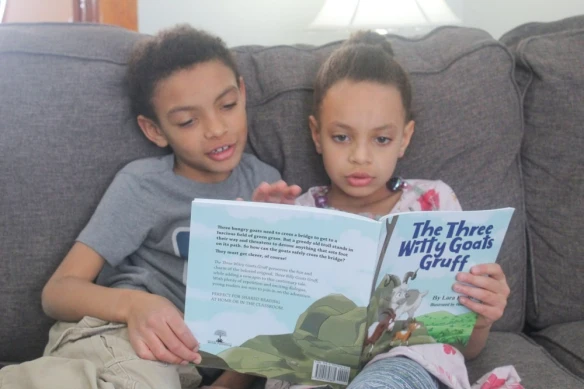 Using your MIND over your MIGHT: Take-a-ways and a book review by Lian Wright at Reese Speaks. Click on image above to read.
Using your MIND over your MIGHT: Take-a-ways and a book review by Lian Wright at Reese Speaks. Click on image above to read.
Using your MIND over your MIGHT: A book review by Barbara Fanson at Readers’ Favorite. Click on image below to read.
I would love to hear your thoughts on my take of the classic Three Billy Goats Gruff.
Lora

FOR IMMEDIATE RELEASE: Author’s new book receives a warm literary welcome.
Readers’ Favorite announces the review of the Children – Picture Book book “Freshly Baked Pie” by Lora Rozler, available HERE
Readers’ Favorite is one of the largest book review and award contest sites on the Internet. They have earned the respect of renowned publishers like Random House, Simon & Schuster, and Harper Collins, and have received the “Best Websites for Authors” and “Honoring Excellence” awards from the Association of Independent Authors. They are also fully accredited by the BBB (A+ rating), which is a rarity among Book Review and Book Award Contest companies.
“Reviewed By Mamta Madhavan for Readers’ Favorite
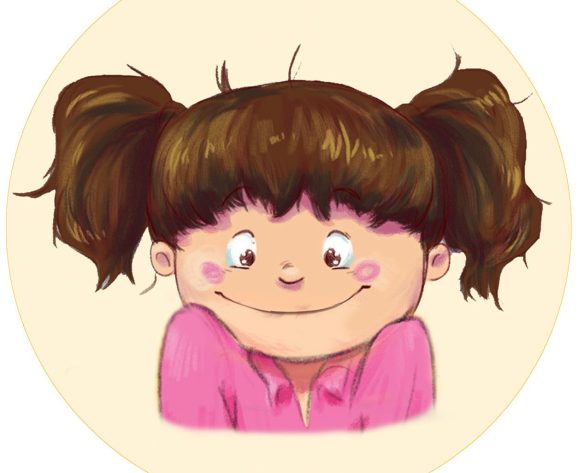 Meet five-year-old Emily in the storybook Freshly Baked Pie by Lora Rozler. Emily does not think being five is easy and it is all about bouncing pigtails and wearing colorful dresses. She is not too happy going to bed when the sun is still out, cleaning her room when she wants to play, and all the rules. Saturday is her favorite day because that is the day her Grandma Betsy comes. What is even more special is seeing the freshly baked pie sitting on the window sill. Emily is tempted watching the strawberry jam oozing, the buttery crust, and the aroma. She cannot wait, though her dad and mum have asked her to stay away from it and not touch it. Will Emily be able resist or will she give in to temptation?
Meet five-year-old Emily in the storybook Freshly Baked Pie by Lora Rozler. Emily does not think being five is easy and it is all about bouncing pigtails and wearing colorful dresses. She is not too happy going to bed when the sun is still out, cleaning her room when she wants to play, and all the rules. Saturday is her favorite day because that is the day her Grandma Betsy comes. What is even more special is seeing the freshly baked pie sitting on the window sill. Emily is tempted watching the strawberry jam oozing, the buttery crust, and the aroma. She cannot wait, though her dad and mum have asked her to stay away from it and not touch it. Will Emily be able resist or will she give in to temptation?
The story is adorable and I like the way the author makes Emily’s temptation to taste the pie whimsical and delightful. The illustrations are as charming as the story, Emily, and the pie, and they breathe life into the story and the characters. Emily’s character is lovable, well portrayed, real, and tangible to young readers. I enjoyed the part where the pie speaks to Emily and that makes the book magical and gives it a mischievous twist. The manner in which Emily goes through those tempting emotions while looking at the freshly baked pie will bring a smile to the faces of all readers. It is a good story for bedtime storytelling and can be used for read aloud and storytelling sessions in classrooms.”
You can learn more about Lora Rozler and “Freshly Baked Pie” on our WEBSITE where you can read reviews and the author’s biography, as well as connect with the author directly or through their website and social media pages.
Readers’ Favorite LLC
Media Relations
Louisville, KY 40202
800-RF-REVIEW
support@readersfavorite.com
https://readersfavorite.com